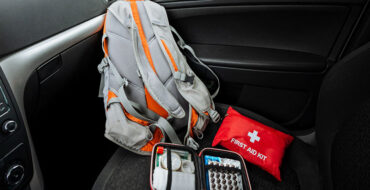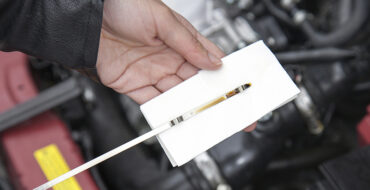Your vehicle relies on many fluids to run properly. Brake fluid, for example, takes the energy you exert when pressing the brake pedal and translates it into pressure to stop the vehicle. Like all other automotive fluids, brake fluid requires replacing to maintain its quality.
Let’s go over why it’s important to change brake fluid, when to do it, and how.

Why flush brake fluid?
Brake fluid is hygroscopic, which means it absorbs water. If the water content in the brake fluid gets too high, it might boil under heavy braking. Brake fluid can also become contaminated with rust and copper. Contamination of any kind will affect your ability to brake.
To avoid this, the fluid needs to be changed regularly.
When to change brake fluid
Your owner’s manual will specify how often you need a brake fluid flush. For most vehicles, this will be every two or three years.
Other signs you may need a brake fluid change include:
- slower stopping time
- braking requires more force
- brake warning light on dashboard
- strange noises or smells when braking
Preparing for a brake flush
There are several ways to do a brake flush, but they all require the same preparation:
- With the vehicle off, use a vacuum bulb or similar siphon to remove almost all the old brake fluid from the brake fluid reservoir. Leave a shallow puddle to prevent air from entering the brake system.
- Top off the brake reservoir with fresh brake fluid.
- Lift the vehicle with a jack and jack stands.
- Remove the tires and wheels.
- Place a drain pan under each wheel to catch the brake fluid as it drips.
Once your preparation is done, you can move on to the brake flush method of your choice.
Gravity brake flush
A gravity brake flush is perhaps the easiest method, but it takes the longest.
- Open the brake bleeder valve on each wheel. The brake fluid will drip from the open bleeder valves.
- Keep the brake reservoir filled with fresh brake fluid.
- Wait for the fluid dripping from the bleeder valve to run clear (this may take more than an hour).
- Once the brake fluid runs clear, close the bleeder valve.
- Top off the brake fluid if necessary.
Manual brake flush
A manual brake flush requires two people. One person sits in the driver’s seat working the brake pedal while the other opens the bleeder valves.
- Have an assistant sit in the driver’s seat.
- Choose a wheel and locate the brake bleeder valve.
- Ask the assistant to pump the brake pedal three times and then hold it down.
- Open the brake bleeder valve to release the pressurized fluid.
- Close the brake bleeder valve.
- Check the brake fluid reservoir and top it off with fresh fluid if necessary.
- Repeat steps 3–6 until the fluid is clear.
- Top off the brake fluid.
Pressure brake flush
Pressure brake fluid tools use pressurized air to push brake fluid through the system.
- Read the instructions included with the pressure brake fluid tool.
- Fill the pressure brake fluid tool with fresh brake fluid.
- Attach the pressure adapter to the brake fluid reservoir.
- Pressurize the tool.
- Open the brake bleeder valve to release the pressurized fluid and allow the fluid to flow until it is clear.
- Close the brake bleeder valve and top off the brake fluid.
Brake flush cost




